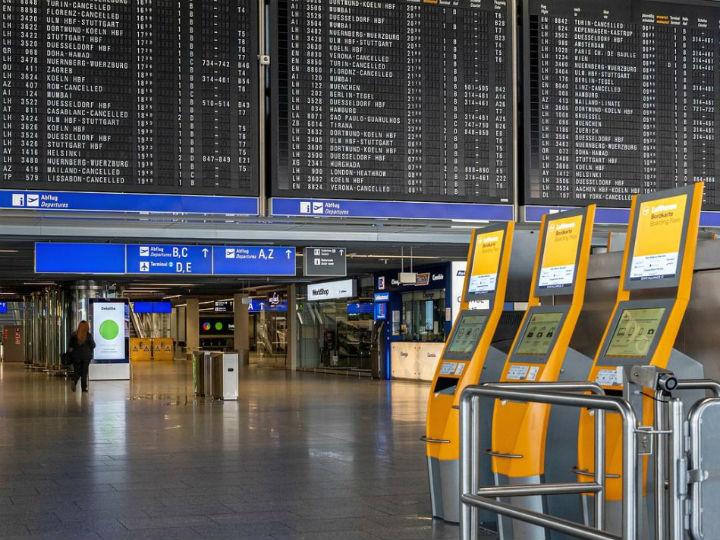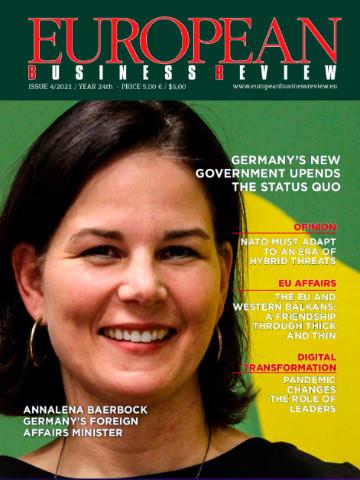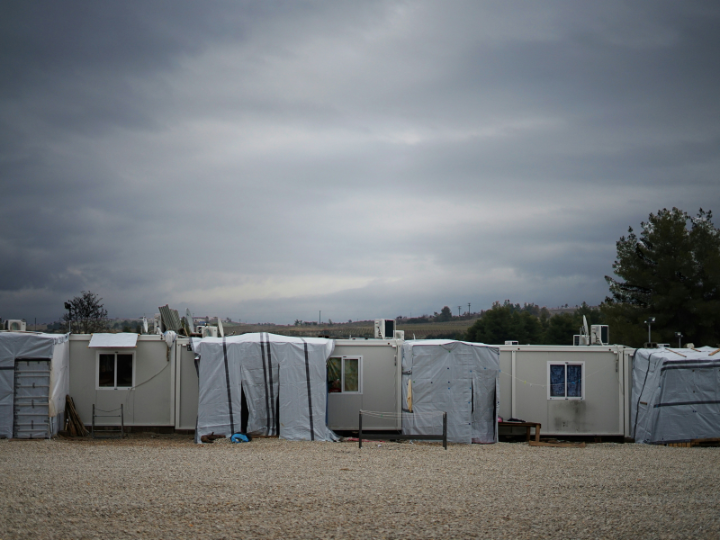by Alexandra Brzozowski and EURACTIV Network
After nearly three months of COVID-19 restrictions and lockdowns and in a bid to save Europe’s summer, the bloc is slowly reopening its internal borders. However, nearly every member state is playing by its own timetable and rules.
The European Commission spelled out on 11 June recommendations to member states to fully reopen the bloc’s internal borders on Monday (15 June) and then allow travellers from selected countries to enter the bloc from 1 July.
“This is not going to be a normal summer… but when we all do our part we don’t have to face a summer stuck at home or completely lost for tourism industry,” Commission Executive Vice-President Margrethe Vestager said ahead of the openings.
Officials hope lifting internal border controls will allow a gradual reopening to other countries from July and revive a tourism industry that flatlined during the lockdown.
The sector makes up almost 10% of the EU economy and Southern European countries in particular, like Greece, Italy and Spain, Europe’s top holiday destinations, are already struggling with debt and the impact of COVID-19.
However, Home Affairs Commissioner Ylva Johansson had said in early May that member states should avoid going it alone. “Member states cannot open the borders to citizens of one EU country, but not to another,” she warned.
But while some member states have already gradually opened its borders to travellers coming from certain countries, and others followed the recommendation to drop restrictions for all EU member states on Monday (15 June), some European countries are still lagging behind.
In this Special Edition of the Capitals, the EURACTIV Network looks around the capitals for an overview of the state-of-play in border restriction.
The ‘Early Birds’
A few states decided to lift restrictions earlier than the Commission’s given date, and even prioritised the lifting of some borders over others.
Lithuania, Latvia and Estonia agreed to lift inner-Baltic travel restrictions on 15 May, creating a ‘Baltic travel bubble’. “We agreed that all the three Baltic countries managed to contain the spread of the coronavirus. Moreover, we trust each other’s health care systems,” Lithuanian Prime Minister Saulius Skvernelis announced.
For Lithuania more specifically, all controls were lifted on its border with Poland as of last Friday (12 June). The country has been updating its ‘safe country list’ every week, in which it features countries from which it is allowing arrivals from EEA countries (plus Switzerland and the UK) where new COVID-19 infections have been lower than 15 per 100,000 persons in the last two weeks. For now, only travel from the UK, Sweden and Portugal remains restricted, while travellers from Belgium are required to quarantine themselves for 14 days.
Poland, after closing its borders on 15 March and imposing a mandatory two-week quarantine for arrivals, opened its borders to EU citizens on Saturday (13 June). “We have to restore trade with other European countries, said Prime Minister Mateusz Morawiecki.
However, for travellers coming from Slovakia, the border is only open for 48 hours and if people entering the country do not present a negative COVID-19 test.
Having closed its borders mid-March and imposing a two-week mandatory quarantine on all its citizens returning home, Hungary first started reopening its borders in May.
Its government was one of the first to open an external border when all crossings were allowed between Hungary and Serbia. Since then, Hungary opened its Schengen borders for truck drivers on 9 June, with so far only citizens of Austria, the Czech Republic, Germany, Slovakia, Serbia, Slovenia and Croatia may enter the country. Travellers coming from those seven countries do not need to go into quarantine, others must.
Since 3 June, Italy has opened its borders for everyone coming from the EU, the UK and the Schengen area. Quarantine is not necessary unless they have been in any other country in the 14 days beforehand. The government dismissed any possible attempt to apply different confinement rules in different regions as “unconstitutional” following spats between local governors.
On 18 May, restaurants, bars, hotels and cafes reopened; however, restrictions could be restored at any time if the epidemiological situation worsens.
On 3 June, Croatia‘s Civic Guard issued a decision allowing citizens of 10 EU countries – Slovenia, Hungary, Austria, the Czech Republic, Slovakia, Estonia, Latvia, Lithuania, Poland and Germany – to enter Croatia under the same conditions that were valid prior to the outbreak of the pandemic. Nationals of other EU countries will have to show they have a good reason, although an accommodation booking will be sufficient.
Although EU citizens could already enter Slovenia as tourists as of 26 May without having to go into quarantine, provided they produced evidence of a tourist booking at the border, the Slovenian government opened its borders for travellers from 17 countries considered epidemiologically safe from 8 June.
However, those not coming from these countries will have to undergo a 14-day quarantine, even if travellers bear Slovenian citizenship. Exceptions were made for Slovenian and Italian citizens who are “owners or tenants of land in the border area or have their own land on both sides of the state border and perform agricultural-forestry work”. Hungarian and Slovenian nationals are able to cross the border without restrictions.
Bulgaria opened borders on 1 June to citizens of the EU, UK, San Marino, Andorra, Monaco, Vatican, Serbia and North Macedonia, as well as to medical workers and family members of Bulgarian citizens.
The ‘On-Timers’
As the reopening caused long traffic jams at the Danish-German border on Monday (15 June), Germany ended all of its border controls with neighbouring countries as of midnight and lifted travel warnings for a majority of European countries. The decision came after the country underwent a series of border closures, for which Interior Minister Horst Seehofer had come under fire.
However, already in mid-May, Seehofer had announced the gradual reopening of borders beginning on 16 May, which included fully lifting restrictions for Luxembourg and relaxing them with Austria, France, and Switzerland.
Travellers from neighbouring countries will no longer have to prove a valid reason for entering the countries, but warnings remain in effect for Spain, Finland, Norway and Sweden.
Austria also decided to open all its borders on Monday. No longer will people crossing the land border have to show a negative COVID-19-test or spend two weeks in quarantine, only a special warning for Lombardy remains. Already on 4 June, the Austrian government decided that travellers from Germany, Liechtenstein, Switzerland, Slovakia, Slovenia, the Czech Republic and Hungary could enter the country without having to go through border controls.
For other EU member states, the same restrictions were lifted, except for Sweden, Portugal and Spain, for which the full freedom to travel is set to be restored only on 1 July.
Belgium lifted all restrictions on Monday, after months of only allowing essential movements in and out of the country. However, due to the high per capita death numbers, Belgians themselves face some travel restrictions: Austria, Iceland, the United Kingdom and Estonia will welcome Belgian travellers under some conditions, such as a mandatory quarantine, while Bulgaria, Norway, Cyprus, Spain and Greece are not open so far.
Neighbouring France has opened its borders to all arrivals from the EU and nations that fall under the border-free Schengen zone. People arriving in the country from within Europe will not be put under quarantine. However, travellers from the UK will face the same two-week confinement that is mandatory for visitors to the UK.
Meanwhile, Romanian citizens returning from 17 European countries will not need to stay in quarantine or isolation for two weeks after their arrival. The list includes Greece and Bulgaria, two popular destinations for summer holidays, but notably excludes Italy and Spain, home to the largest Romanian migrant populations, and two of the hardest-hit countries. Flights to and from the 17 countries resumed on 15 June.
The list of countries now comprises of Austria, Bulgaria, Czechia, Cyprus, Croatia, Germany, Greece, Hungary, Iceland, Latvia, Liechtenstein, Lithuania, Malta, Norway, Slovakia, Slovenia and Switzerland, and will be updated weekly, public health authorities said.
Finland, which allowed for business travel and other necessary trips within the Schengen zone on 14 May with strict guidelines after suspending passenger traffic to Sweden, Estonia and Germany – lifted its border restrictions with Estonia, Latvia, Lithuania, Denmark, Norway and Iceland as of 15 June. Passengers no longer have to undergo a 14-day quarantine upon arrival.
The ‘Latecomers’
However, not all EU member states plan to reopen borders to EU travellers right now.
Spain‘s prime minister, Pedro Sanchez, announced on Sunday (14 June) his country would reopen its borders to the rest of the EU from 21 June and allow travellers to avoid quarantine upon entering the country. On top of that, travel from non-Schengen countries and Portugal will only be allowed from 1 July as long as the country’s epidemiological situation is similar or better than that of the EU.
Madrid is, however, allowing thousands of Germans to fly to the Balearic Islands for a two-week trial run from Monday. The travellers will not be required to undergo the 14-day quarantine.
Greece, while opening the country on 15 June to tourists from countries with similar epidemiological situations including Germany, China, Denmark, Austria, Bulgaria, Romania, and the Czech Republic, has ‘blacklisted’ travellers from Belgium, France, Italy and the Netherlands until 1 July. Arrivals from regions badly hit by the coronavirus, which include the Paris region, Madrid, and Italy’s Lombardy region, will be required to spend their first night in a designated hotel.
Cyprus too, which has announced it will reopen on 20 June, is for the time being banning certain nationals from entering the country.
In Denmark, the border will remain closed until at least 1 September except for tourists from Germany, Norway and Iceland, if they book at least six nights of accommodation, as well as Finnish and Swedish travellers who own a summer home in the country. However, as opposed to Sweden, it has decided to isolate itself voluntarily.
Ireland’s health authorities currently require anyone coming into Ireland, except from Northern Ireland, to self-isolate for 14 days, upon arrival, including Irish residents. Arrivals have to complete a passenger locator form, although exemptions are in place for providers of essential supply chain services such as hauliers, pilots and maritime staff.
The ‘Undesirables’
However, the lifting of restrictions doesn’t mean Schengen is fully revived.
Many countries have kept their travel restrictions in place for Sweden. While there are no entry restrictions for travellers from the EU, Switzerland, Norway, Liechtenstein, Iceland and the UK, particularly by the Nordic states Sweden is being treated as the “odd one out” due to its unconventional pandemic strategy, which is creating bad blood among the usually tight-knit states.
The ‘Colour-coded’
The Czech Republic has set up a list of European countries divided into three groups depending on the COVID-19 risk level, which it updates on a weekly basis. As of 15 June 2020, EU citizens coming from “green countries” may enter the Czech Republic without the necessity of having a negative COVID-19 test.
All EU member states but for Belgium and the UK have been marked “green”. The two member states have been marked “orange”, which signifies a medium risk level. In other words, while Czech citizens can travel without any restrictions, foreigners coming from these countries have to show a negative COVID-19 test or undergo a 14-days quarantine. By comparison, Sweden, Portugal and the Silesian Voivodeship in Poland belong to the red category, meaning all people travelling from these regions have to show a negative test or go to the quarantine.
The Netherlands has also adopted such a colour-coded list. As of Monday (15 June), it was deemed safe for the Dutch to visit 16 EU member states. In countries where travellers are tested upon arrival and have to self-isolate for a day awaiting tests, such as Spain, Greece, Cyprus and Ireland were deemed unsafe by the government.
However, travel to Sweden, Denmark and the UK, was not recommended for the rest of the summer. “This is because of the health situation in these countries,” the ministry said, adding that if one travels there, one is “strongly advised to go into 14-day quarantine” upon return. Denmark only remains on the orange list because the country has not yet confirmed whether Dutch tourists are allowed to enter.
And what about non-EU countries?
UK borders never closed and the country isn’t distinguishing between European and worldwide arrivals. A 14-day quarantine applies, with travellers having to give their journey and contact details. The government started barring and quarantining essential workers, transit passengers or people coming from Ireland, the Isle of Man or the Channel Islands on 8 June.
The Commission said restrictions should be lifted from July 1 for the Western Balkans six – Albania, Bosnia-Herzegovina, Kosovo, Montenegro, North Macedonia and Serbia – because “their epidemiological situation is similar or better than that of the EU”.
Exceptions to restrictions will apply to students and highly-skilled non-EU workers.
While Serbia has opened its borders, its citizens are not allowed to enter Montenegro or travel to EU member Croatia.
When it comes to the citizens’ favourite destination, Greece, Serbs who travelled to Greece via Bulgaria had told N1 TV on Monday (15 June) that they had been turned back from the border and were told they could only enter as of 1 July.
This comes after Serbian Foreign Minister Ivica Dacic – after a meeting with his counterpart, Nikos Dendias – said Serbian citizens would be able to travel to Greece without tests and other restrictive measures as of 15 June. on Monday, the country’s foreign affairs ministry said it still had no information or official confirmation from Athens that Serbian nationals would not be allowed to enter Greece until 1 July.
*first published in: www.euractiv.com




 By: N. Peter Kramer
By: N. Peter Kramer

